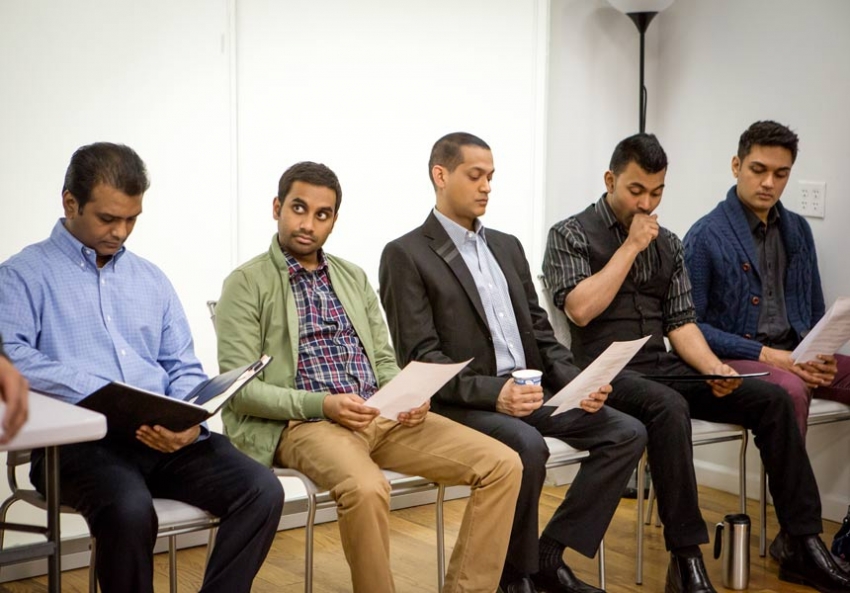Course One – Literature This course seeks to examine contemporary Asian American literature through its different parts: novels, short stories, and personal essays. While reading all of the texts is highly recommended, the course objectives can be applied to individual texts as well. Prominent themes that emerge throughout the readings in this course include form, national identity, intergenerational family, blackness, and fiction versus nonfiction. Course Readings Novels Native Speaker by Chang-Rae Lee The Other Side of Paradise by Staceyann Chin Short Stories & Essays “The Paper Menagerie” by Ken Liu…
Category: Lesson Plans
Course Two: Poetry
Course Two – Poetry This course seeks to examine how Asian American poets have utilized page poetry as narrative storytelling. Particularly, it seeks to interrogate how Asian American writers have used poetry in a distinct way from literature to express complex lived realities. Themes in the readings include the production of history, biracialism, postmodernism, Asian futurism, immigrant masculinity, colonialism, and language. Course Readings Collections Engine Empire by Cathy Park Hong Lucky Fish by Aimee Nezhukumatathil Poems “The Gift” by Li-Young Lee “Thaw” by Jane Wong “March of the Hanged Men”…
Course Three – Hybrid Storytelling
This course seeks to expand the conventional understanding of Asian American narrative storytelling beyond literature and poetry. Particularly, it engages with new forms and mediums afforded by the modern era that blur the line between traditional forms. The seminal text in this section, Dictee, is a postmodern work demanding complex analysis and secondary sources. This section also explores spoken word poetry as a unique vehicle for Asian American narrative expression. The central themes in this section include fragmented identity, gender, sexual assault, queerness, imperialism, language, and family. Suggested Readings Hybrid…
Overview: South Asian Americans
Often times South Asian Americans are left out of the “Asian-American” discussion. Many students are unfamiliar with the existence of South Asian Americans and this course aims to bring visibility to this particular sub-section of Asian-American. This course aims to: Describe the geography and diversity of South Asia and to introduce students to which countries are included: Bangladesh, Bhutan, India, The Maldives, Nepal, Pakistan and Sri Lanka. Discover the rich history of immigration regarding South Asians to the United States. Discuss and analyze identity. Who represents Asian-American? Who represents South Asian?…
Lesson 1: Immigration and History
This lesson aims to:Watch Full Movie Online Streaming Online and Download Understand the history of migration into American from South Asia. Use technology and primary sources to find this information. Analyze citizenship regarding South Asians in America. First the instructor should present the resource www.saada.org and demonstrate its purpose and organization. Once the students understand the organization of this site, split the students up into groups and have them create a timeline of South Asian migration to the United States. Near the end of class regroup and have the groups…
Lesson 2: Desi Identity
This lesson plan aims to: Discuss important identity markers within the South Asian population. Apply Arjun Appadurai’s theory of scapes to identity. Reading prior to class: Disjuncture and Difference in the Global Cultural Economy by Arjun Appadarai Discuss identity markers such as religon, ethnicity, language, and country and their importance in the identity of South Asian Americans. This discussion should aim to disaggregate information on the SOuth Asian American community. Explain Appadurai’s scapes theory: Ethnoscapes is the movement of people with the advent of readily available and more affordable transportation . Mediascape is…
Lesson 3: South Asian Americans and Politics
This lesson should aim to: Discuss and analyze the involvement of South Asians in government. In particular look at how Indian-Americans have become governors or senators, how have they used their background to become successful in politics. Read about the political activism of South Asian Americans throughout history. Understand how Islamophobia has impacted South Asians. Discuss how Islamophobia does not only impact Muslim desis. Reading: Uncle Swami by Vijay Prashad Interestingly, two out of the three Indian-American governors represent the Republican party (Bobby Jindal and Nikki Haley). Analyze how both…
Lesson 4: Portrayal of Desis in the Media
The learning outcomes of this class include: Recognizing the different kinds of stereotypes portrayed in the media about South Asian Americans. Understanding the impact of these stereotypes on the perception of South Asian Americans. Recognizing who (gender, ethnicity, religion) is represented as South Asian. How has Youtube changed the dialogue around South Asians in North America. Show pictures and clips in class portraying Desis or Indians in the media. Have a discussion about what these portrayals might means. The clips shown can include: Appu – The Simpson Rajesh “Raj” Koothrappali – The…
Overview of Chinese Immigration
Chinese Immigration to the US in the 1800s “Asians resisted their exclusion and marginalization and thereby enlarged the range and deepened the meaning of American democracy.” Gary Okihiro, Margins in the Mainstream This lesson series will analyze and link Chinese immigration policies in the US in the 19th century and the attitudes that produced such discriminatory policies as origins to modern perceptions of Asians as the “perpetual foreigners”. Objectives include:Watch Full Movie Streaming Online and Download Establish a baseline history of Chinese immigration and the steps taken by Congress to limit the Chinese…
Part 1: Historical Context for Immigration
When the Chinese came to America, they sought out to earn fortunes from the California Gold Rush. After the Gold Rush though, they continued to stay in the US as laborers for projects like building railroads. They came from regions of China that were suffering from extreme poverty, so the prospect of a new life appealed to them and returning to China was not an option. They kept to themselves but increasing competition for work further marginalized the community. Due to pressures from the white community, Congress passed several acts of…








